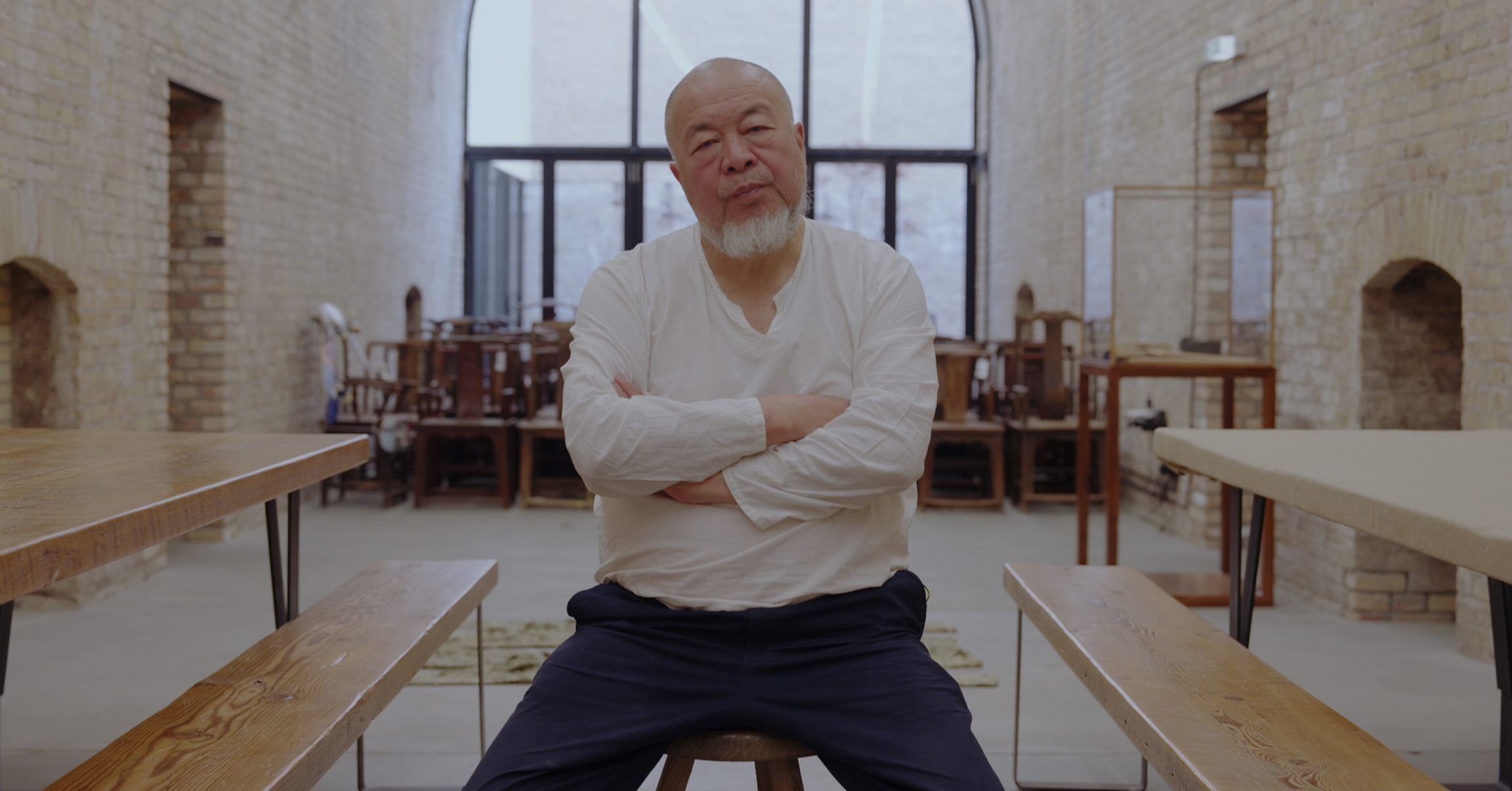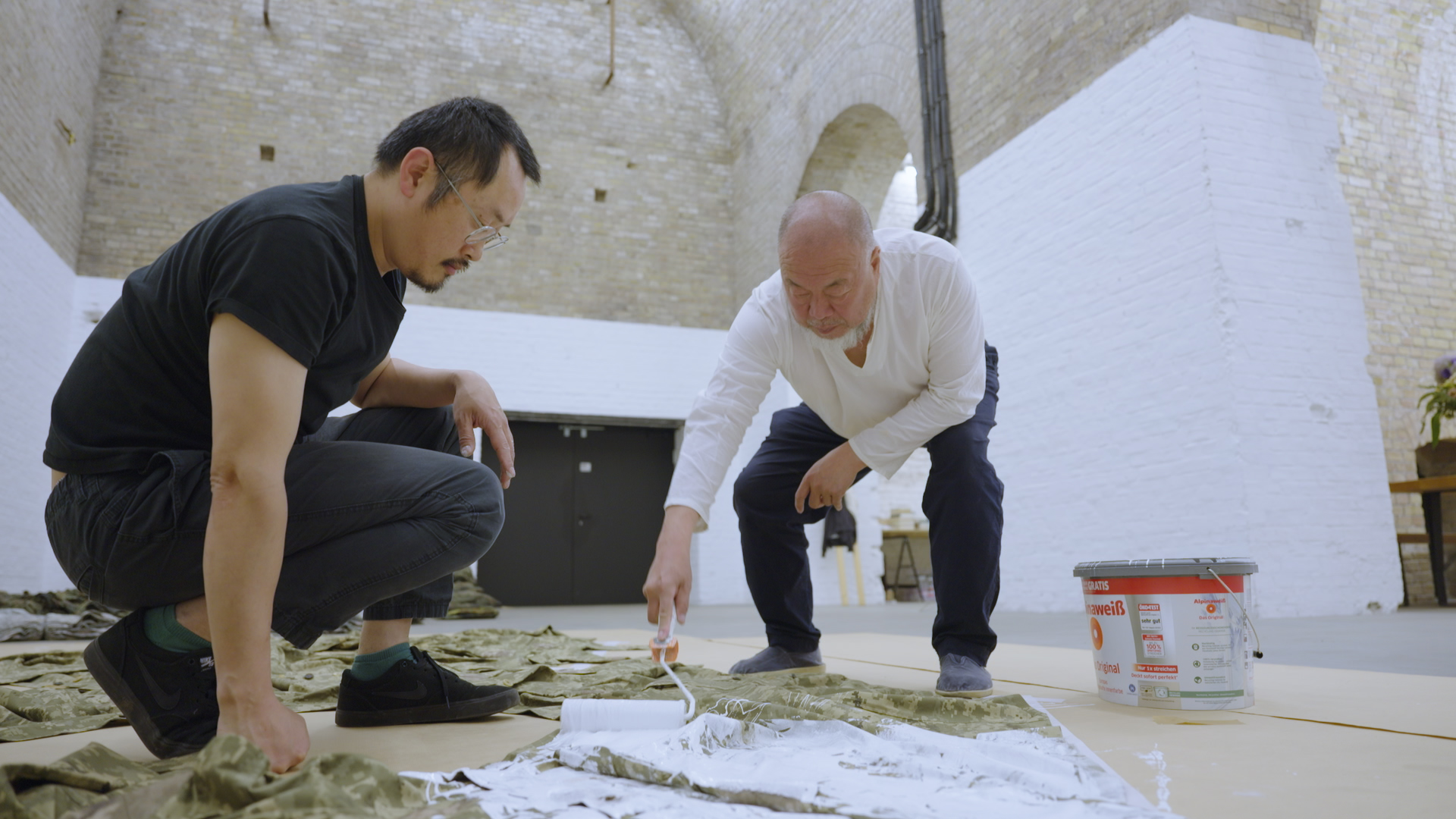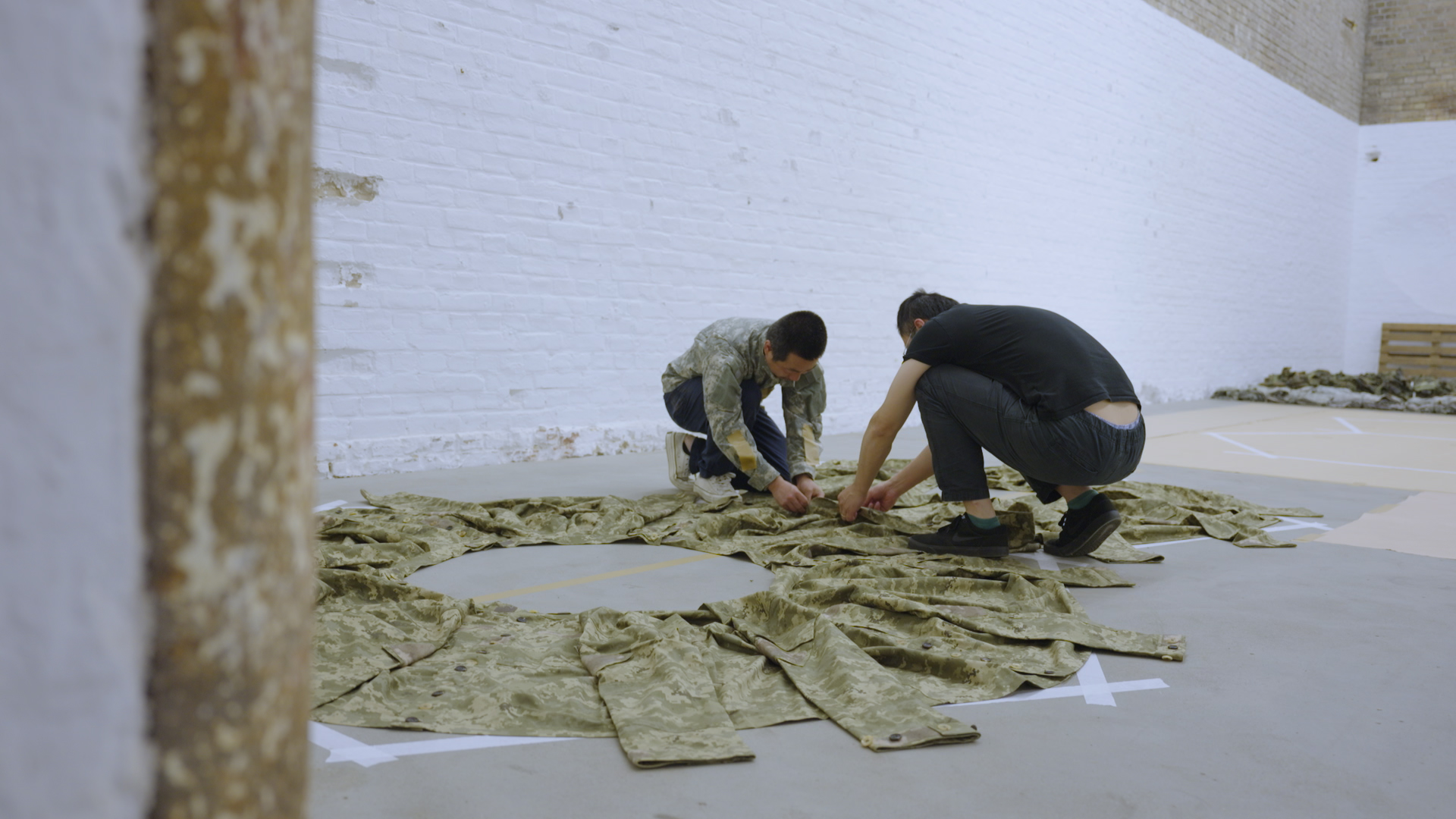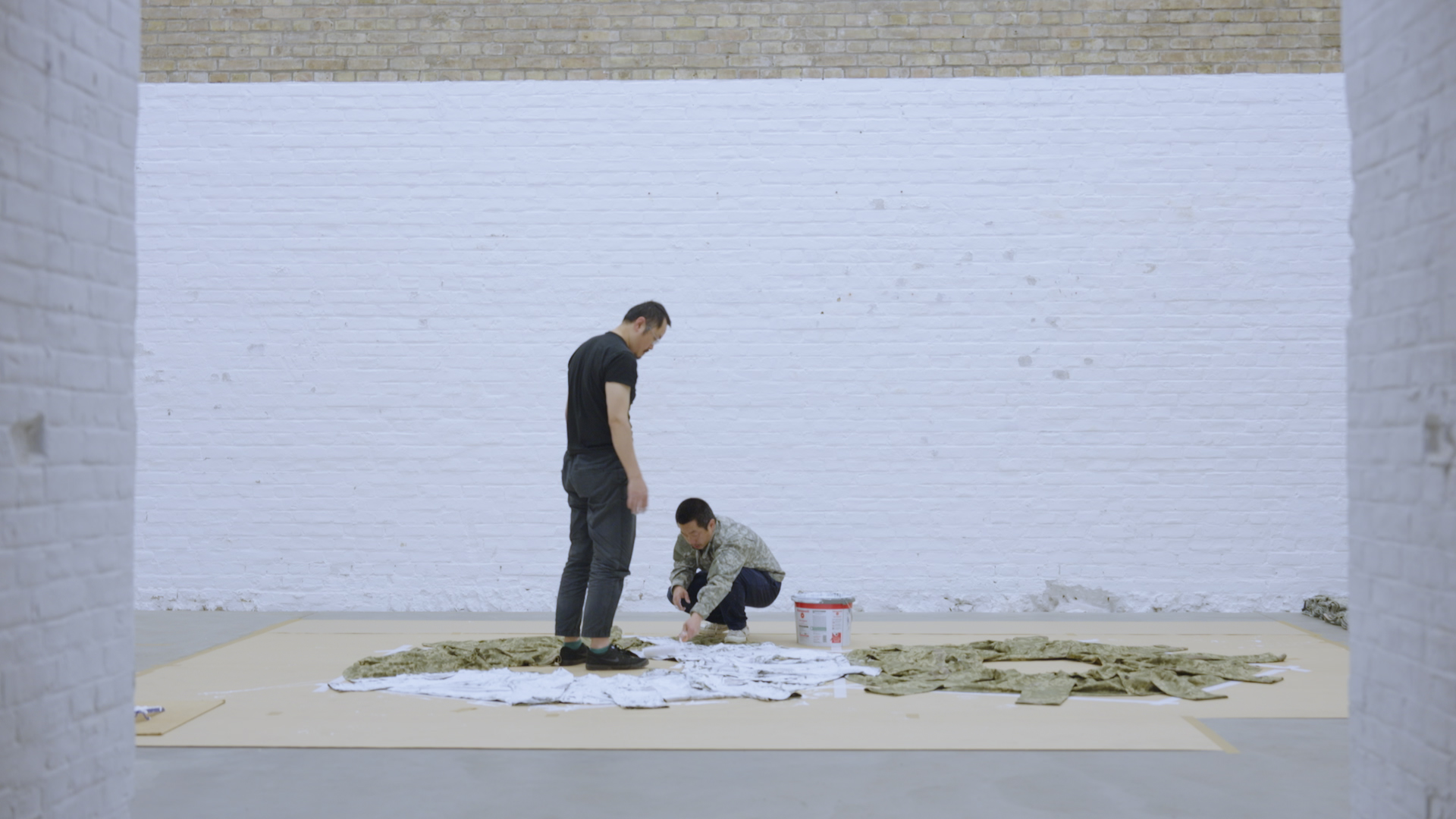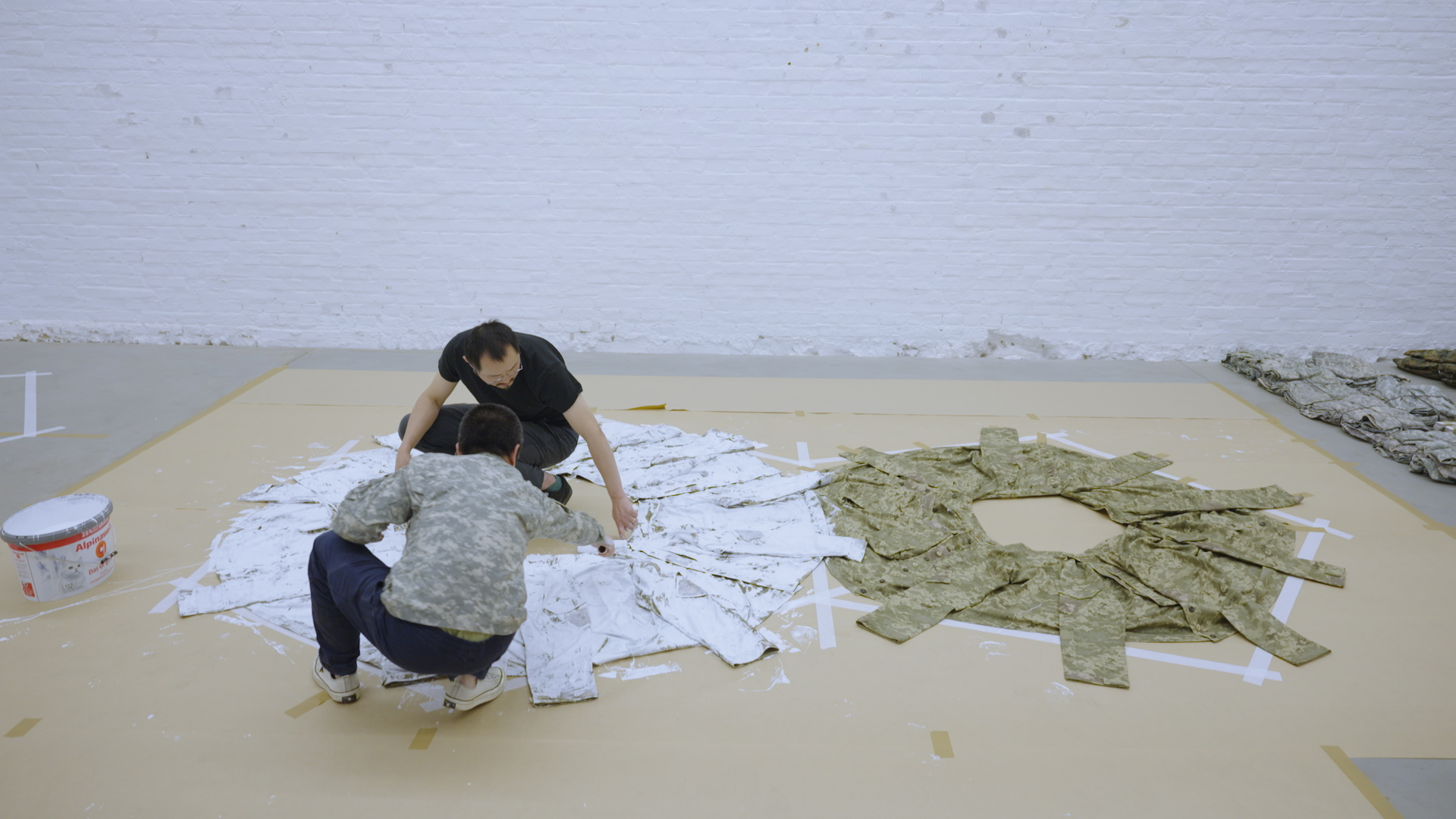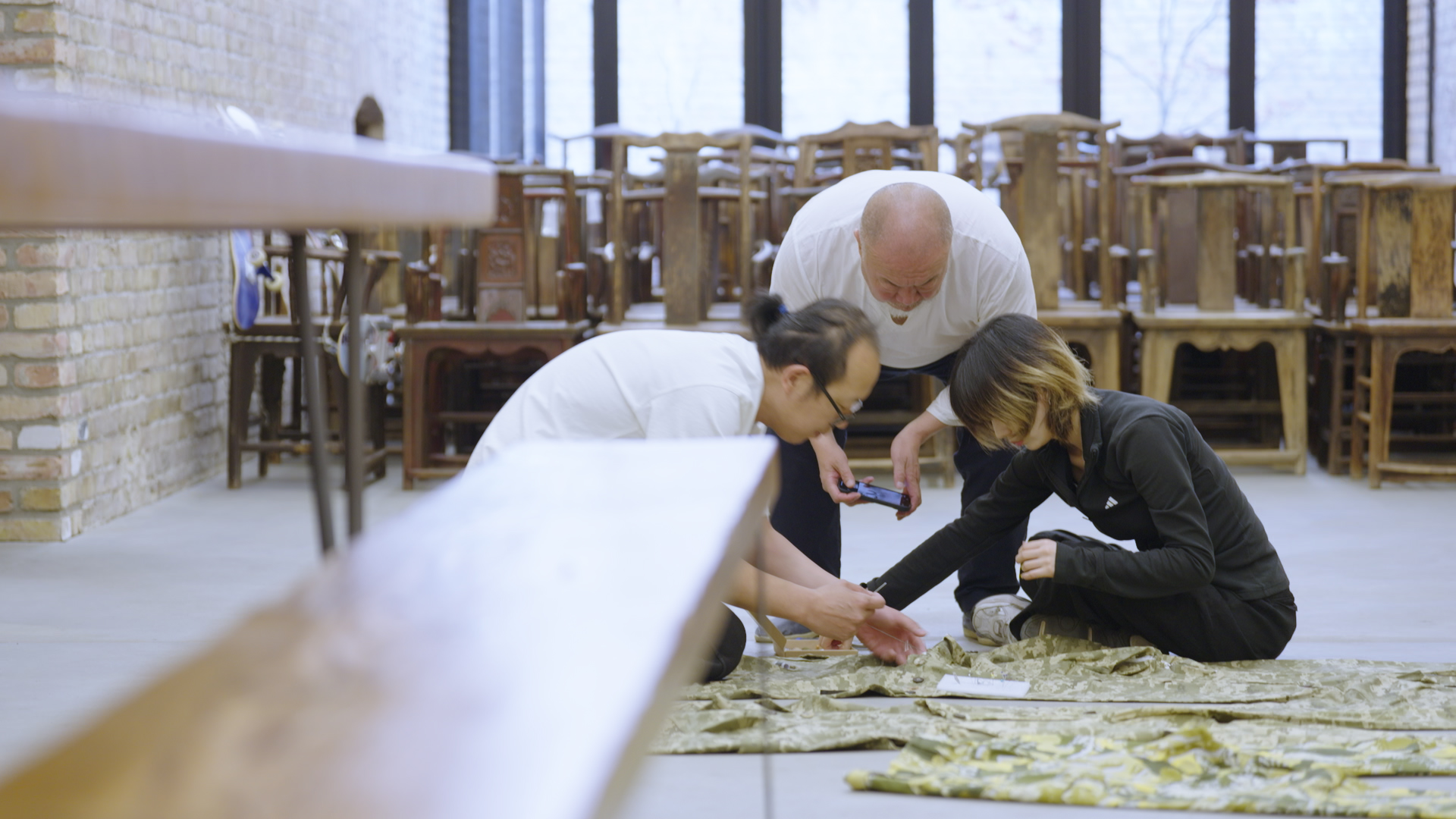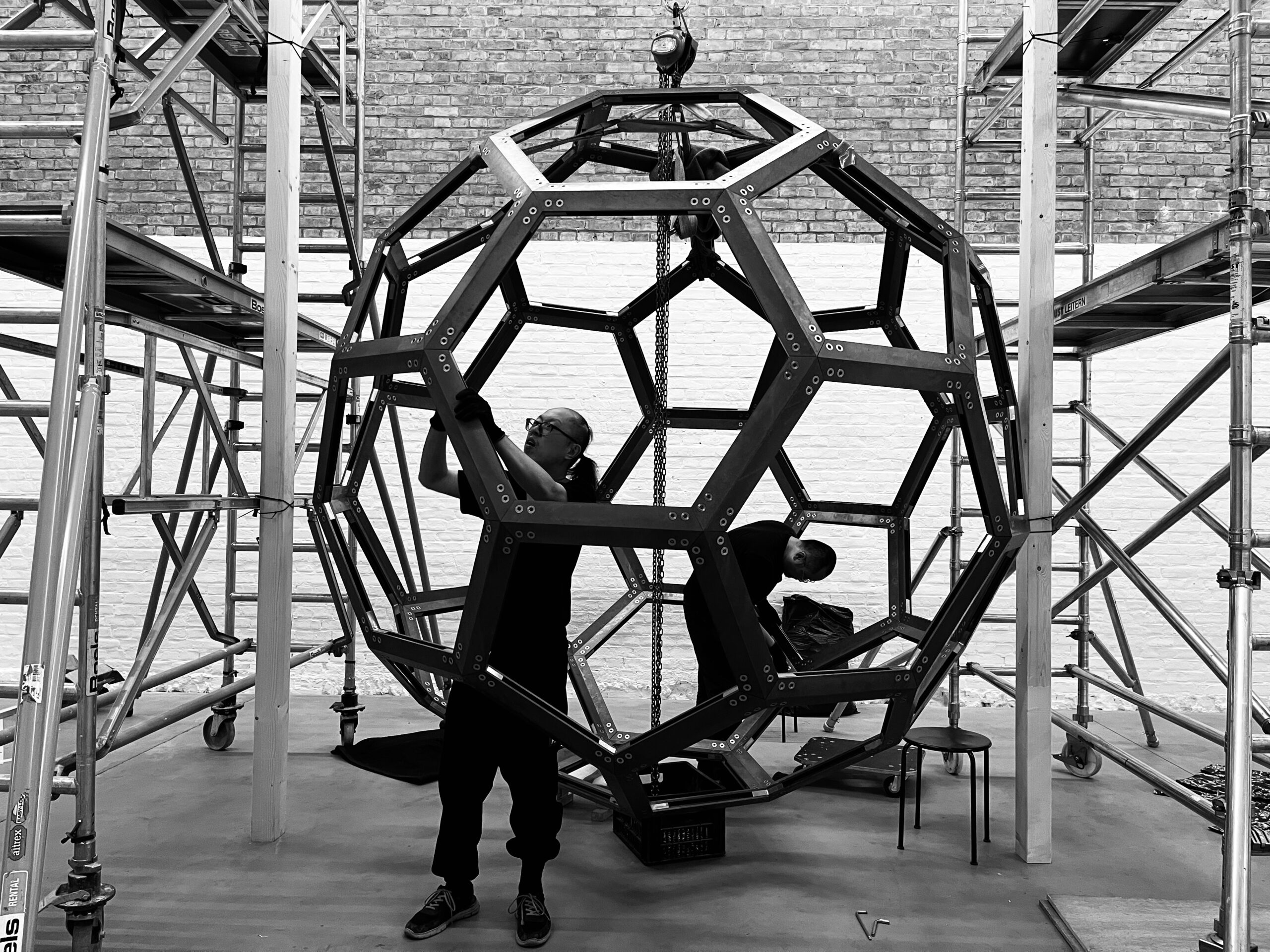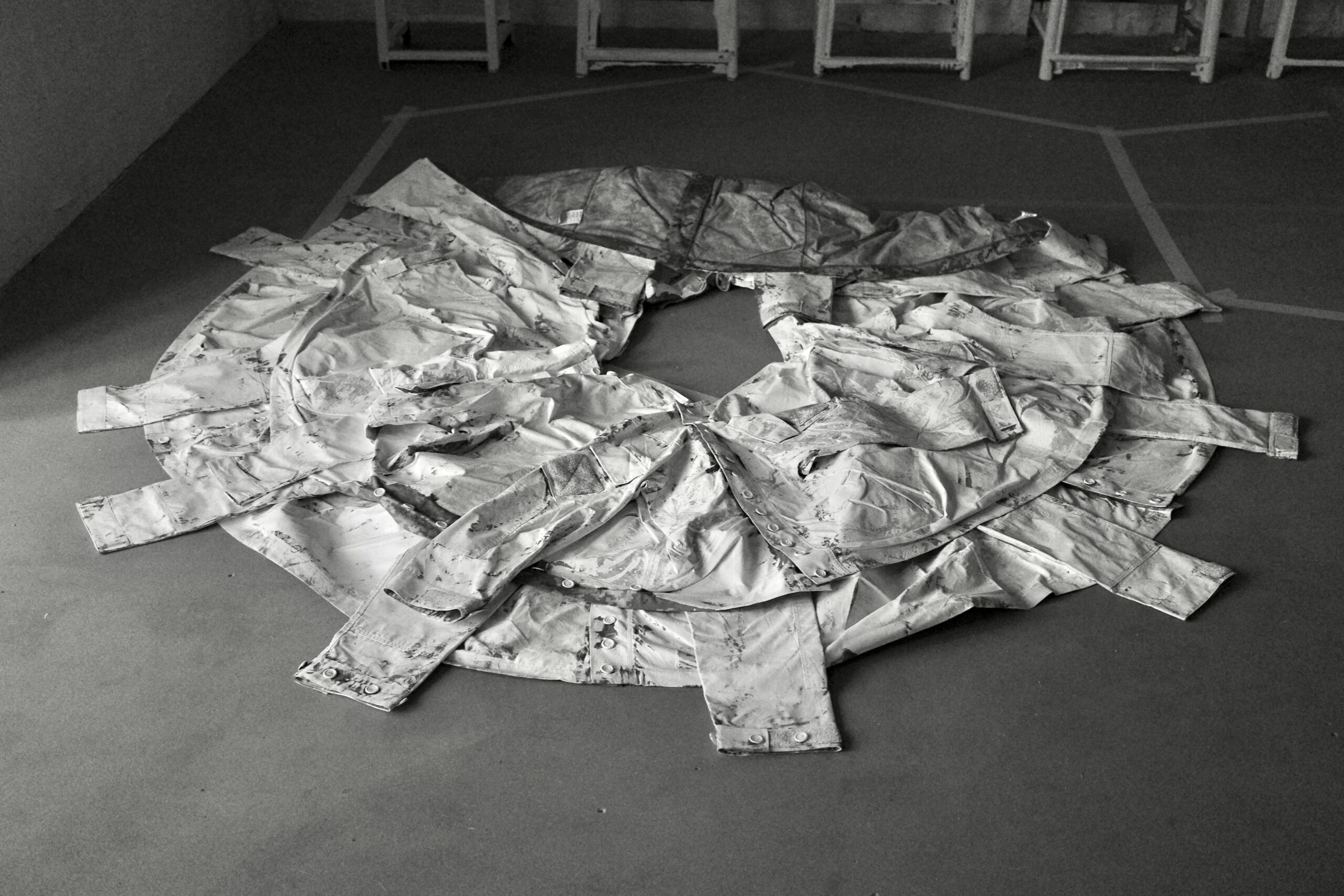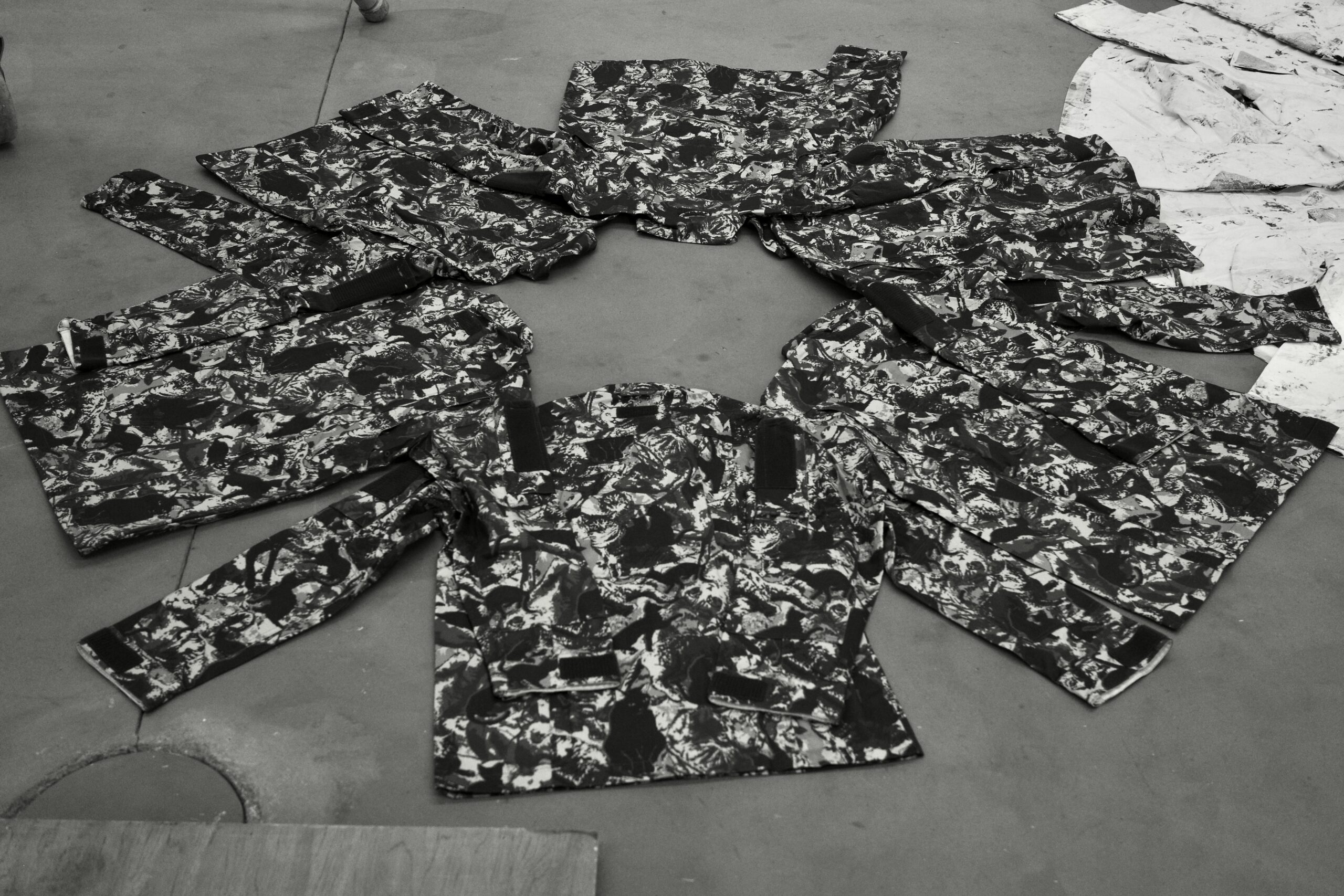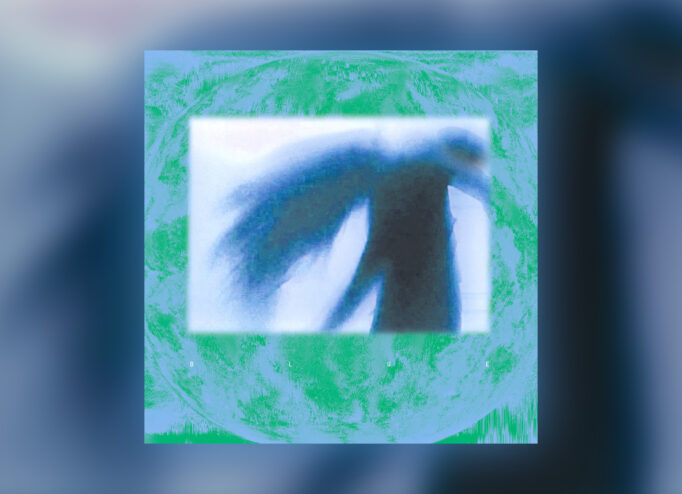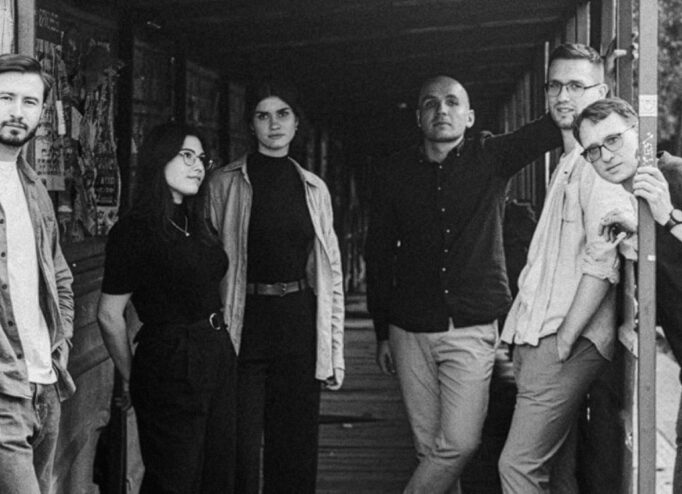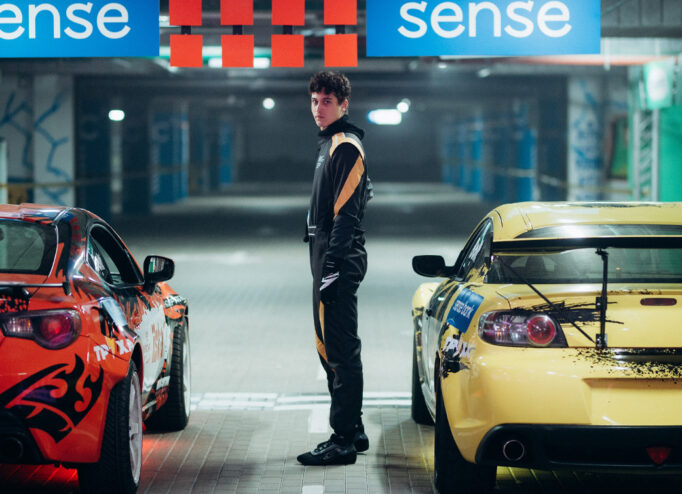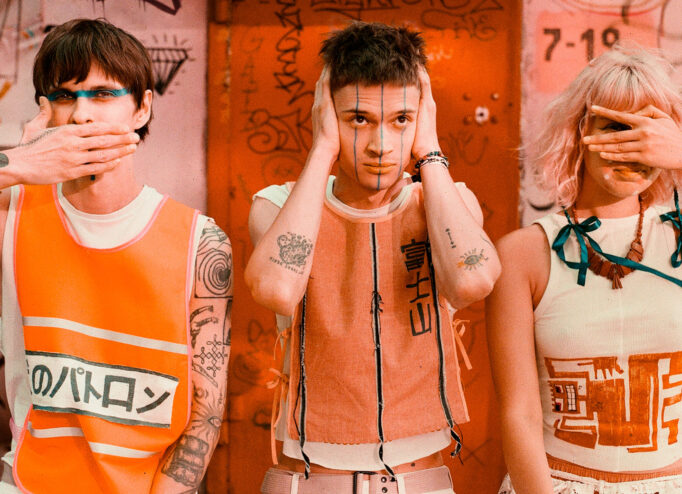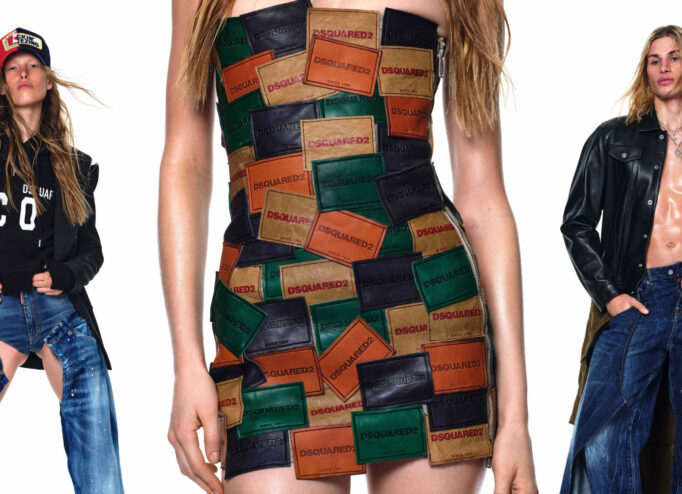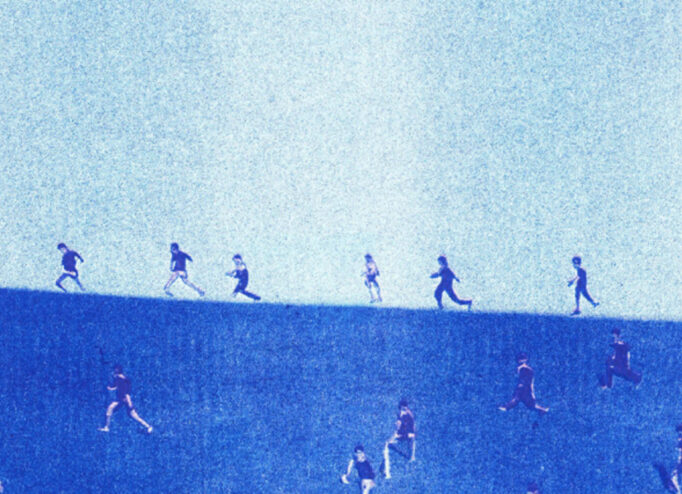The RIBBON International platform has announced the opening of a new installation by Chinese artist Ai Weiwei in Kyiv. The work ‘Three Perfectly Proportioned Spheres and Camouflage Uniforms Painted White’ was created using Ukrainian camouflage military shirts and will be Weiwei’s first project presented in Ukraine
About the concept of the work
‘Three Perfectly Proportioned Spheres and Camouflage Uniforms Painted White’ grew out of the artist’s interest in exploring the phenomenon of war. The description calls it ‘the artist’s response to the escalating armed conflicts threatening the world of today’.
In the work commissioned by RIBBON International, Weiwei — as in all his previous projects — uses ‘ideologically-coded objects of the past to make art that resonates with urgent contemporary concerns’.
The artist himself describes the presentation of this work in Ukraine as ‘a dialogue about war and peace, rationality and irrationality’.
‘In this era, being invited to hold an exhibition in Kyiv, the capital of a country at war, I hope to express certain ideas and reflections through my work, — Weiwei says. — My artworks are not merely an aesthetic expression but also a reflection of my position as an individual navigating immense political shifts, international hegemonies, and conflicts. This exhibition provides a platform to articulate these concerns.’
In addition, with this work, Ai Weiwei also wanted to emphasize the ‘possibilities of art’ in difficult times.
‘Art is something related to human’s most primitive reactions or emotions, fear or even fantasies or dreams. Those are always deeply rooted, and it’s more profound than we can ever even understand. So I think art is the only way to save humanity from authoritarian and other forms of this kind of technical bureaucracy and technical authoritarian push.’
What does the work look like
Visually, the installation is partly inspired by Leonardo da Vinci’s ‘Divina Proportione’.
The work is based on a structure made up of spherical forms. Ai Weiwei had already used a similar structure in his work ‘Divina Proportione’, first presented in 2004.
‘The artist sees these spheres as emblematic of ancient ideals of order and rationality. Ai conceives of these geometrical forms as figurations of Renaissance and later Enlightenment world views’, the description of the structure reads.
Each sphere is encased in modified camouflage military shirts painted white. This is the result of Ai’s long-term exploration of ways to use such fabric.
The description adds that the idea of using military camouflage is drawn from nature: ‘It is a visual language which imitates the subterfuges of animals in their struggle for existence. The fabric of this new work incorporates animal motifs and is painted over in thin white paint, a second layer of camouflage…
Among the accent details are buttons, which also serve as a continuation of one of Ai Weiwei’s key works, ‘Five Raincoats Holding a Star’, first displayed in the late 1980s… The fact that the façade is covered in white alludes to ideological whitewashing and bleaching.’
About the opening of the installation
The opening of ‘Three Perfectly Proportioned Spheres and Camouflage Uniforms Painted White’ will take place on September 14 at the ‘Pavilion of Culture’ at VDNH. The installation will be on view there until November 30, 2025.
RIBBON International explains that, in combination with the location where the work will be presented, Weiwei’s project ‘brings different ideological forms into a certain configuration that presents them in a different, critical light’. Pavilion 13 is a glass exhibition building from 1967, originally constructed to ‘demonstrate the achievements of the national economy of the Donbas region’. See what it looks like in our article.
Переглянути цей допис в Instagram
Along with the exhibition announcement, Ai Weiwei himself shared footage from his trip to Ukraine. It is not yet known whether the artist will personally attend the installation’s opening in September.
Переглянути цей допис в Instagram
About Ai Weiwei
Ai Weiwei is a Chinese conceptual artist and dissident. In his work, he explores the value of human life, the struggle against injustice, humanitarian crises, and political repression. He was born into the family of Chinese poet Ai Qing, who was exiled by the Chinese authorities together with his wife and children for 17 years to a village on the border with North Korea. The family returned to Beijing in the late 1970s, after the death of Mao Zedong.
Ai Weiwei studied at the Beijing Film Academy and at Parsons School of Design in New York, where he discovered pop art and conceptualism. In 1999, he opened a studio in Beijing, which he named Fake. The Chinese authorities arrested the artist twice — in 2010 and 2011. After that, he left the country, living first in Berlin and later moving to Cambridge.
One of Weiwei’s most famous works is the 2010 installation ‘Sunflower Seeds’. The floor of London’s Tate Modern was covered with sunflower seeds made of porcelain and hand-painted by Chinese workers. Visitors were allowed to walk across the floor, and over time people gradually wore the porcelain into dust.
It was later discovered that the dust was hazardous to health, and the installation was closed to visitors. The seeds themselves, according to the artist’s concept, were intended to symbolize the exploitation of cheap labor.
